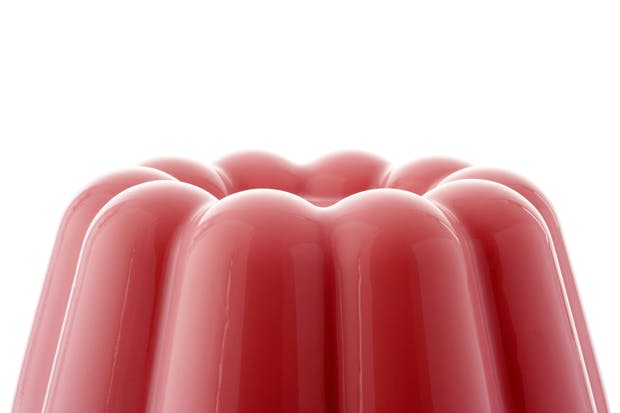Blancmange. Poor, maligned blancmange. The slimy, over-set staple of children’s birthday parties and school dinners, destined to be pushed around a plate and loathed for life. Blancmange has become shorthand for an age of blandness: the dessert equivalent of Chris de Burgh. Even its name sounds heavy on the English tongue.
But we do the blancmange a grave disservice. It is, after all, essentially a panna cotta. Shouldn’t a milk jelly by any other name taste as sweet? It is slightly lighter than its Italian counterpart, yes, but that’s all to its credit.
So why the bad reputation? The culprit, I think, is packet blancmange. No amount of careful preparation can mask the cornflour. In theory, English blancmange is set with cornflour and French with gelatine. But we’ve used all kinds of setting agents, from boiled chicken to ground almonds (there’s been plenty of time to experiment: this dish is name-checked in the Canter-bury Tales). Using gelatine prevents the dreaded cornflour sliminess; instead, the blancmange melts slowly in the mouth, thanks to its near body-temperature melting point.
These days, talk of blancmange elicits blank faces; a whole generation have missed out. I didn’t taste my first until 2009. It was the day before my 22nd birthday and I’d just moved to London. We sat on rickety chairs watching a TV that had seen better days. My flatmate darted up and down tending to a steaming pot on the stove. I didn’t think much about it until the next morning, when, on the kitchen table, I found a vase of roses, and a gently swaying work of art: an ivory jelly infused with saffron and rose. If this was the beginning of being a grown-up, it was as delicious as it was surprising.
Because here’s the thing: blancmange, despite appearances, is terribly grown-up. It never really belonged at children’s parties. It’s more subtle than its more lurid cousin, the jelly. That doesn’t mean it can’t pack a flavour punch. In fact, its creaminess perfectly tempers strong, aromatic, grown-up flavours. Flavours that would otherwise be soapy, like rose or earl grey, become sweetly floral. Those that tend to overpower, like chai, saffron or cardamom, become delicate. Black pepper or coffee are mellowed and smoothed. I make it one afternoon in my kitchen, as the sun shines. It slips effortlessly out of its mould and stands proudly, its wobble more understated than the brash jelly jiggle. This is what Nigella might call an ‘inner-thigh wobble’. My spoon sinks into it smoothly. It is perfect — I dance around the kitchen with delight.
And joy of joys, it’s so simple to make. For this version, I choose bold flavours: saffron and cardamom, sweetened with dark muscovado sugar. It is the easiest and most pleasing pudding I have made in an age.
Saffron, cardamom and muscovado blancmange
Serves six
1. Pour the cream and milk into a pan. Add the saffron and cardamom, bring very slowly to just under the boil. As soon as bubbles rise, whip the pan off the heat, cover with a tea towel and leave for 30 minutes.
2. Add the gelatine and sugar to your infused milk and cream. Heat slowly, stirring continuously, until the gelatine has almost all dissolved. Don’t let the mixture boil, and don’t worry about any lumps.
3. Strain the mixture through a sieve into a clean container. Gently bang the container two or three times to release any trapped air bubbles.
4. Decant the mixture gently into your mould(s). Place in the fridge covered with kitchen roll or a clean cloth and chill for at least four hours.
5. Run the outside of the mould under a warm tap for 10–15 seconds, but don’t dribble water on the blancmange. Remove any coverings or lids, place a plate over the base of the mould and, in one confident movement, invert. If necessary, give the mould a bit of a jiggle; the blancmange should slip out.
6. Serve with soft seasonal fruit, cooked long enough to be sticky and slightly caramelised. Peaches, cherries and apricots are coming into season: I would roast them in honey, with a splash of pudding wine, a dab of butter, and just a touch of vanilla or cinnamon.
EQUIPMENT
SIEVEMEDIUM-SIZED PAN
JELLY MOULD
1 large (800ml) jelly mould or six individual (130ml) moulds
INGREDIENTS
600ml MILK200ml DOUBLE CREAM
HALF-TSP SAFFRON
QUARTER-TSP GROUND CARDAMOM
20g GRLATINE (OR 8 LEAVES)
70g DARK BROWN MUSCOVADO SUGAR
If you can’t get hold of ground cardamom, use 8 lightly crushed green cardamom pods






Comments